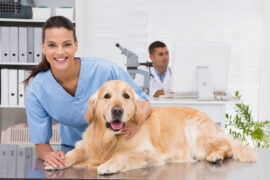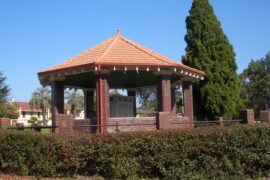Unleash Your Creativity with Homemade Toys: A Fun Guide for Parents!
Greetings, crafty parents and guardians! Have your little ones ever imagined toys that seem to come straight out of a fairy tale, or perhaps they’re simply insatiable when it comes to playing with new trinkets? If your nodding feels almost automatic, you’re in the right spot! Welcome to our joyous journey into the wonderful world of DIY toy-making. Here’s your personal treasure map to creating magical playthings that will light up your children’s eyes with excitement—and trust us, their laughter is just the cherry on top!
Understanding the Joys of Handmade Toys
Before we dive into the nuts and bolts of creating toys, let’s have a quick heart-to-heart about why you’re about to embark on this rewarding adventure. Handmade toys are not just unique, they are memories-in-the-making. They’re gifts of time and love, showing your children that imagination and creativity can indeed become ‘playable’. Plus, they’re highly beneficial for the environment, often using recycled materials that would otherwise contribute to waste.
Remember, there’s no monochrome umbrella for DIY toys; they come in every shade imaginable, from simple handcrafted puzzles to more intricate wooden toy cars, dolls, or even bespoke board games. Best of all? These creations can be tailored to your child’s interests, developmental stages, and learning objectives. Ready to get started? Roll up those sleeves—it’s DIY time!
Gathering Your Toy-Making Supplies
Your journey into toy-making starts with assembling your toolkit. While your supplies will vary depending on the project, here’s a handy list to get you started:
- Recycled materials (cardboard boxes, plastic bottles, old clothes)
- Natural materials (wood, rocks, dried beans)
- Basic craft supplies (scissors, glue, tape, paint, markers)
- Sewing essentials (fabric, thread, stuffing, needles)
- Decorative elements (buttons, beads, ribbons, stickers)
- Woodworking tools (for more advanced projects)
Remember, the golden rule is safety first! Ensure any materials and tools are appropriate for your child’s age and supervision is always there when needed.
Easy Peasy Toy Projects for Beginners
Never made a toy before? No problem! Here are a couple of easy DIY toys to get your gears turning:
- Homemade Playdough: Mix flour, salt, water, cream of tartar, and a bit of oil (and food coloring for that extra pizzazz) to create a non-toxic playdough that provides hours of malleable fun!
- Bottle Cap Tambourine: String together some old bottle caps onto an embroidery hoop and create a rustic, charming tambourine!
These projects are just the teaser trailer for what you can achieve, even with the most basic materials. Ready to level up? Keep reading!
Diving Deeper into Toy Making
Now, if you’re feeling a bit more ambitious, or if your little ones are craving something a little more sophisticated, it’s time to venture into more complex toy crafting. Here is where woodworking can come into play, or perhaps you’re interested in sewing soft toys adorned with your children’s favorite colors or patterns.
A tip for the ambitious: start small and simple. Your first wooden toy doesn’t have to be a masterpiece—it’s all about the learning curve and the love poured into it. As for sewing, soft blocks with different textures or a simple doll can cultivate a sense of achievement, not just for you, but for your kiddos too!
Conclusion
In the lands of imagination and fun, creating toys is an exploration of love and creativity that transcends the realm of store-bought playthings. As you embark on your toy-making odyssey, remember that each stitch, each stroke of paint, and each endlessly hilarious testing session is not only about the toy—it’s about the time and stories shared between you and your child.
Stay tuned for our next section, where we will dive into step-by-step instructions for medium-complexity toy crafts and share inspiring ideas to help you create your own family heirloom toys. Keep those creative spirits high and the playtime even higher!

Five Essential Tips Before You Begin Crafting Toys
Crafting toys for your little ones is an endearing project that can foster your child’s development in numerous ways. Before you begin, here are some key points to keep in mind:
- Safety is Paramount: When creating toys, always consider the safety of the materials and design. Avoid using small parts for younger children and make sure all edges are smooth to prevent splinters or cuts. Non-toxic materials are a must, especially for toys that children may put in their mouths.
- Child’s Interests First: Think about what your child loves. Are they into dinosaurs, vehicles, fairy tales, or perhaps space adventures? Creating toys that reflect their interests will not only make the play more engaging but also show that you value their passions.
- Developmentally Appropriate: Consider your child’s age and what skills you want to promote. A toddler might benefit from a simple puzzle or stacking toy, while older kids might appreciate something that challenges their fine motor skills or critical thinking, like a homemade board game or a DIY craft kit.
- Eco-Friendly Materials: Try to use eco-friendly or upcycled materials. Not only is this good for the environment, but it also teaches your children the value of recycling and sustainability. Plus, it adds a story to the toy—you never know, that cereal box could become the next treasured dollhouse!
- Involve Your Child: If possible, involve your child in the toy-making process. This is a fantastic way to spend quality time together, and it gives them a glimpse into the creative process. A toy that they’ve helped make will hold a special place in their heart (and toy box!)
Now, with these tips in hand, let’s move on to some more detailed toy projects that will keep those creative juices flowing!
Fostering Creativity with Intermediate DIY Toy Projects
Feeling confident with the basics? Wonderful! Let’s graduate to some intermediate-level projects that will stir both your and your kids’ imagination.
- Customizable Cardboard Castles: With some spare cardboard, scissors, and markers, you can build the castle of your child’s dreams. Design it together, cut out windows and doors, and decorate with paints, fabrics, or any other materials you have. Not only is this project recyclable, but it’s also a playhouse they can customize time and time again.
- Felt Story Boards: Create characters and scenery out of felt, allowing your children to stick these to a felt board and make up their own stories. It’s an excellent way to encourage narrative thinking and creativity.
- Personalized Peg Dolls: Using simple wooden pegs, some paint, and perhaps scraps of fabric, you can create a whole family of dolls that resemble friends and family, or even let your children design their own colorful characters.
Each advance in your toy-making adventure brings new opportunities for bonding and learning. And remember, perfection is not the goal; joyful creation is. Every mismatched stitch or lopsided wheel carries its own charm and story. However, if you ever find yourself needing guidance, there are countless online communities and tutorials ready to inspire and direct your inner toymaker. So go ahead, gather your supplies, and let’s keep creating wonders with our hands and hearts!
Coming up, we’ll delve into the realm of advanced toy-making. Think electronics for beginner robot makers, scripting simple stories for homemade video games, and even more enchanting craft ideas to surprise and delight. The possibilities are endless, and the only limit is how far your imagination can soar!
See more great Things to Do with Kids in New Zealand here. For more information see here
Disclaimer
The articles available via our website provide general information only and we strongly urge readers to exercise caution and conduct their own thorough research and fact-checking. The information presented should not be taken as absolute truth, and, to the maximum extent permitted by law, we will not be held liable for any inaccuracies or errors in the content. It is essential for individuals to independently verify and validate the information before making any decisions or taking any actions based on the articles.




